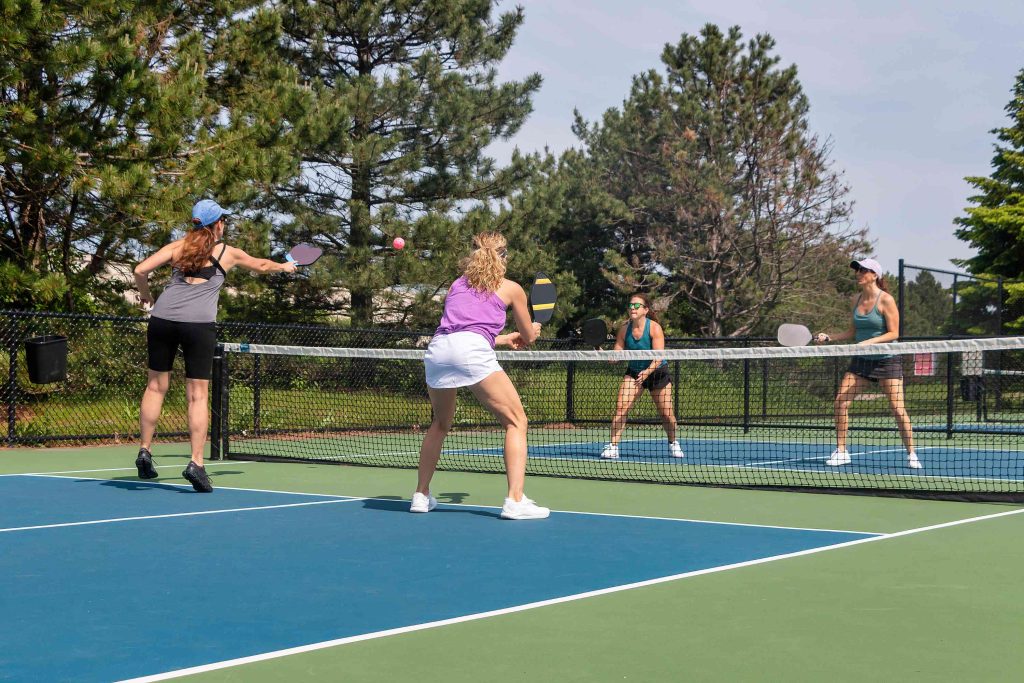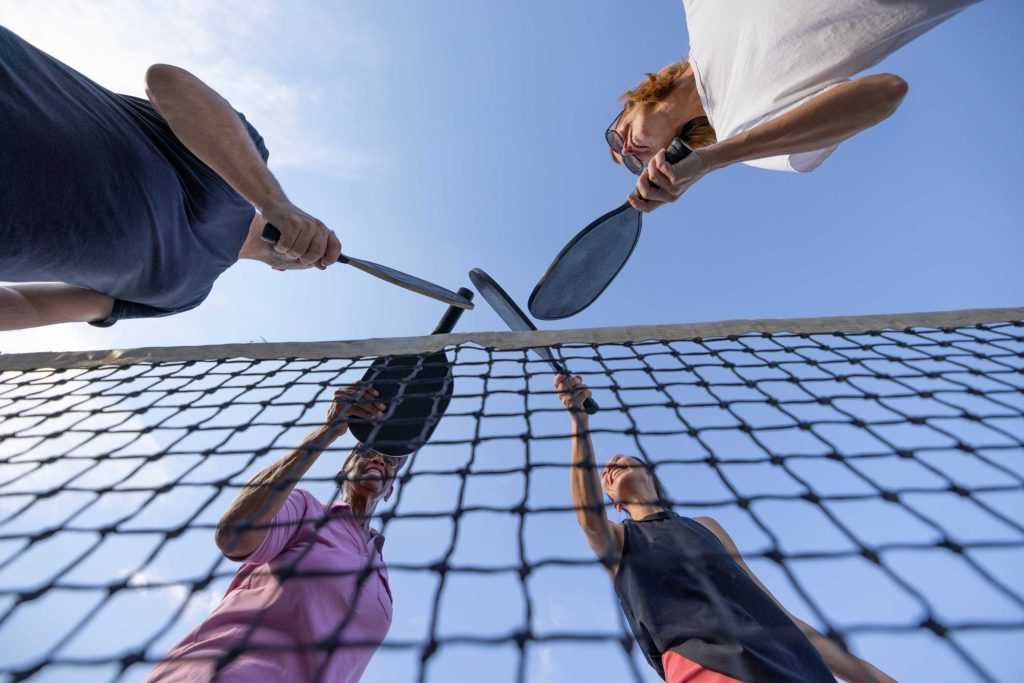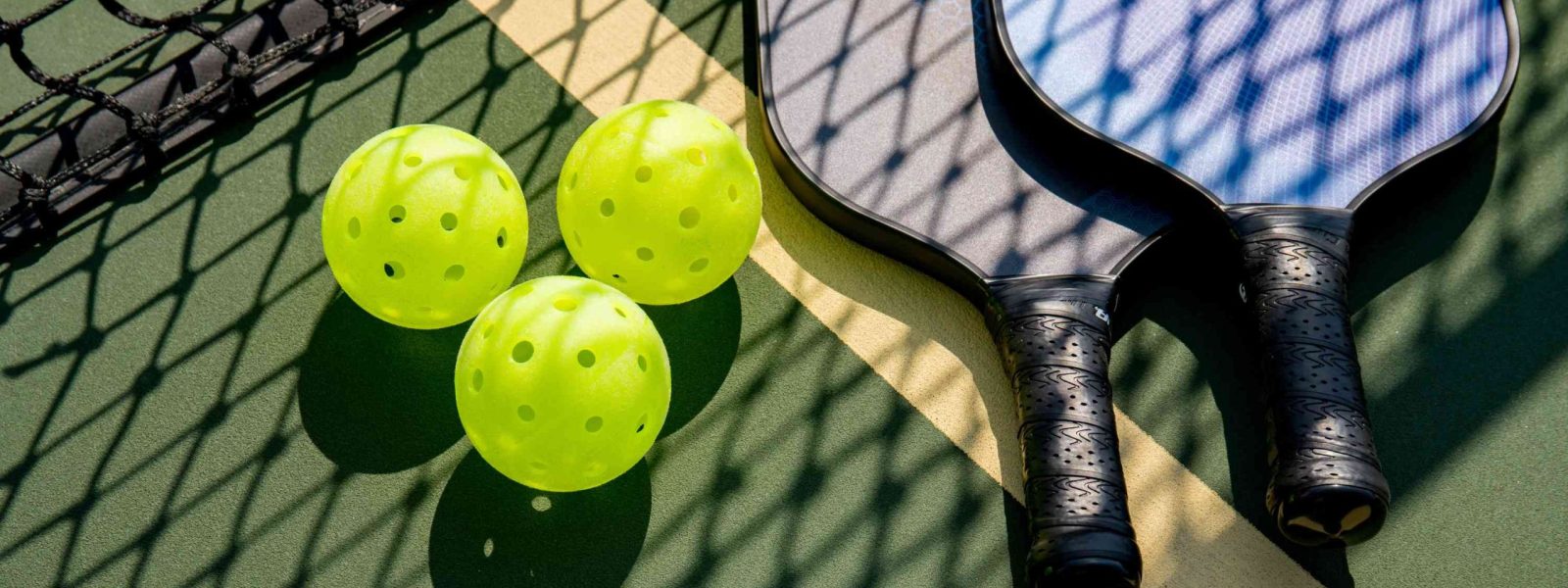In recent years, pickleball has emerged as one of the world’s fastest-growing sports, captivating players across all ages and skill levels. With its unique blend of elements from tennis, badminton, and ping pong, pickleball offers a dynamic, accessible, and social experience that has quickly become popular in places as diverse as the United States and Malaysia. This article explores why pickleball has become so popular globally, including the history and unique appeal of the sport, and how it’s thriving in Malaysia.

What is Pickleball?
Pickleball is a paddle sport played on a court slightly smaller than a tennis court, typically by two or four players who use paddles to hit a perforated ball back and forth over a net. The game can be played indoors or outdoors, and unlike tennis, pickleball does not require a powerful serve, making it accessible to a broader range of players. The sport’s ease of play, moderate physical demands, and social atmosphere have made it a favorite among players of all ages.
A Brief History of Pickleball
The origins of pickleball trace back to 1965 in Bainbridge Island, Washington. Joel Pritchard, a congressman from Washington state, and his friends Bill Bell and Barney McCallum, created the game to entertain their families. The sport initially began with simple equipment: a badminton net, homemade wooden paddles, and a perforated plastic ball. Over time, pickleball developed its own set of rules, standardized courts, and custom-designed paddles.
By the 1970s, the first official pickleball tournament was held, attracting attention across the United States. Fast forward to the 1980s and 1990s, and pickleball had developed into a full-fledged sport with governing bodies, professional players, and tournaments. Today, it has spread internationally, with professional leagues, broadcasted tournaments, and even consideration for inclusion in future Olympic Games.
Why is Pickleball So Popular?
- Accessibility: Pickleball is easy to pick up, even for beginners. It doesn’t require the intense physical stamina or strength that tennis or badminton may demand, which makes it an excellent choice for people of all ages and fitness levels.
- Social Interaction: Pickleball is known for its welcoming, community-oriented atmosphere. People often gather in groups, making it a fantastic way to meet others, socialize, and play a few games. This social aspect has played a huge role in its popularity, as people see it as both exercise and a way to connect with others.
- Adaptability: The sport is played on a smaller court than tennis, which allows players to have a fun and challenging workout without having to cover large distances. This smaller court is especially appealing to older players or people with limited mobility.
- Affordable to Start: Compared to other sports, pickleball requires minimal equipment—a paddle, a ball, and access to a court—making it budget-friendly for players of all ages. Many community centers, parks, and gyms provide courts for free or at a low cost, adding to its accessibility.
- Broad Appeal Across Age Groups: Pickleball attracts a broad demographic, from teenagers to seniors. In the U.S., for instance, more young adults are joining the game, as well as older players who enjoy it for its low-impact physical benefits. This widespread appeal across age groups has allowed pickleball to thrive as a sport that brings families and communities together.

Pickleball’s Growing Popularity in Malaysia
Pickleball has found a warm reception in Malaysia, where it has become increasingly visible in urban and suburban areas alike. Malaysian sports enthusiasts enjoy the game’s inclusivity, as it bridges the gap between various age groups and fitness levels. Pickleball tournaments are also becoming more common, with local clubs organizing events to engage more participants and introduce newcomers to the game.
In cities like Kuala Lumpur, Johor Bahru, and Penang, pickleball courts have sprung up in recreational centers, parks, and sports clubs. This growth reflects an overall trend in Southeast Asia, where pickleball is gaining recognition as a recreational and competitive sport. As more Malaysians discover the joy of playing pickleball, the demand for facilities and organized events has surged, leading to more pickleball courts, equipment availability, and even training programs.
Also Read: Ipoh Gets Active with Launch of New Pickleball Fun Club
The Future of Pickleball in Malaysia
The enthusiasm for pickleball in Malaysia indicates that the sport has the potential to become a staple in the country’s recreational and sports culture. Schools, community centers, and sports organizations are increasingly offering pickleball as an option, which could foster a new generation of players. As awareness and participation grow, Malaysia may soon see competitive leagues, regional tournaments, and perhaps national players on the international pickleball scene.
With continued community interest, supportive organizations, and increased media coverage, pickleball is set to establish itself as one of Malaysia’s beloved recreational sports. The game’s simplicity, affordability, and community-oriented nature make it an ideal choice for people across Malaysia, offering an inviting and enjoyable way to stay active, socialize, and experience the spirit of friendly competition.







